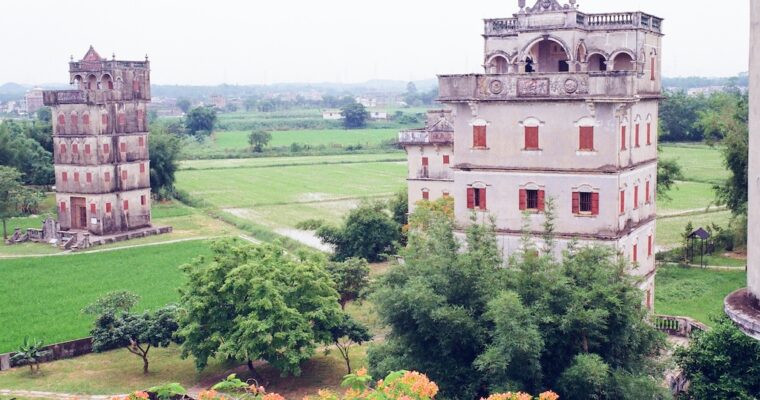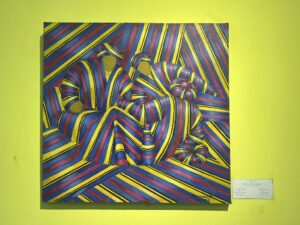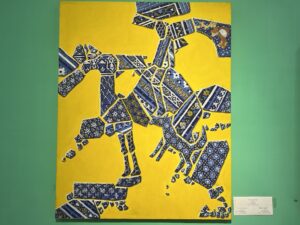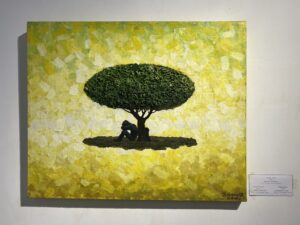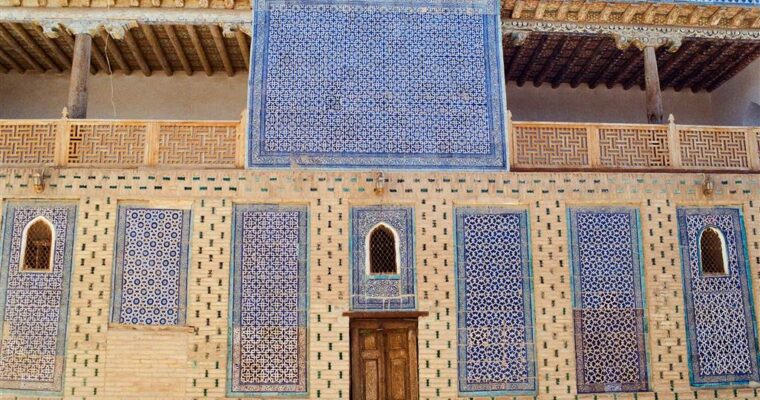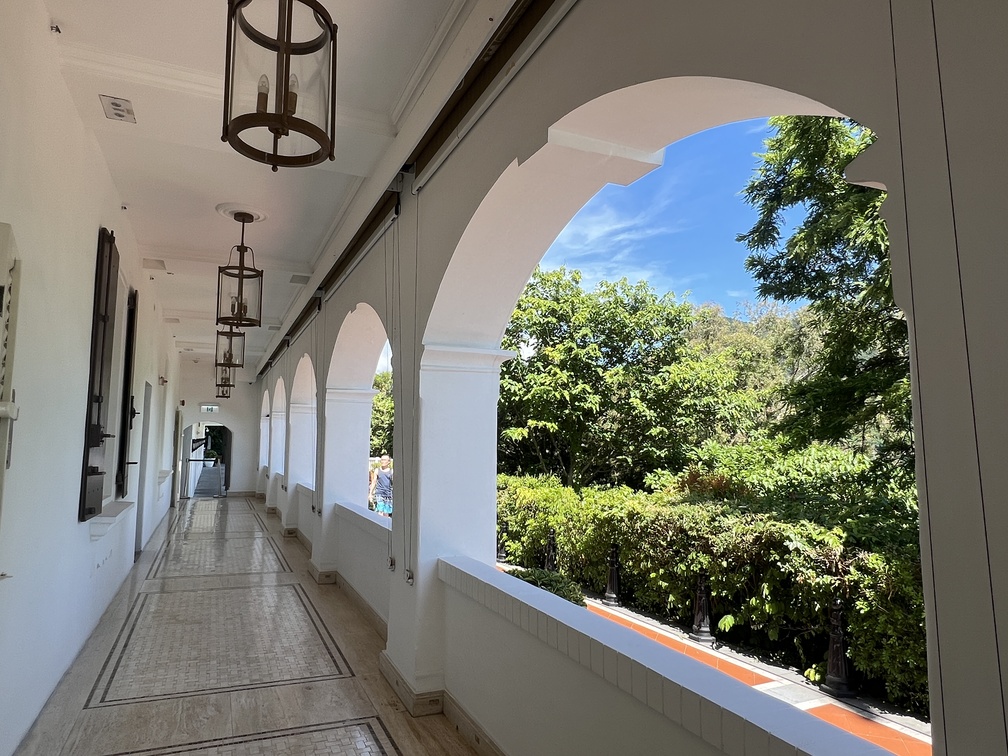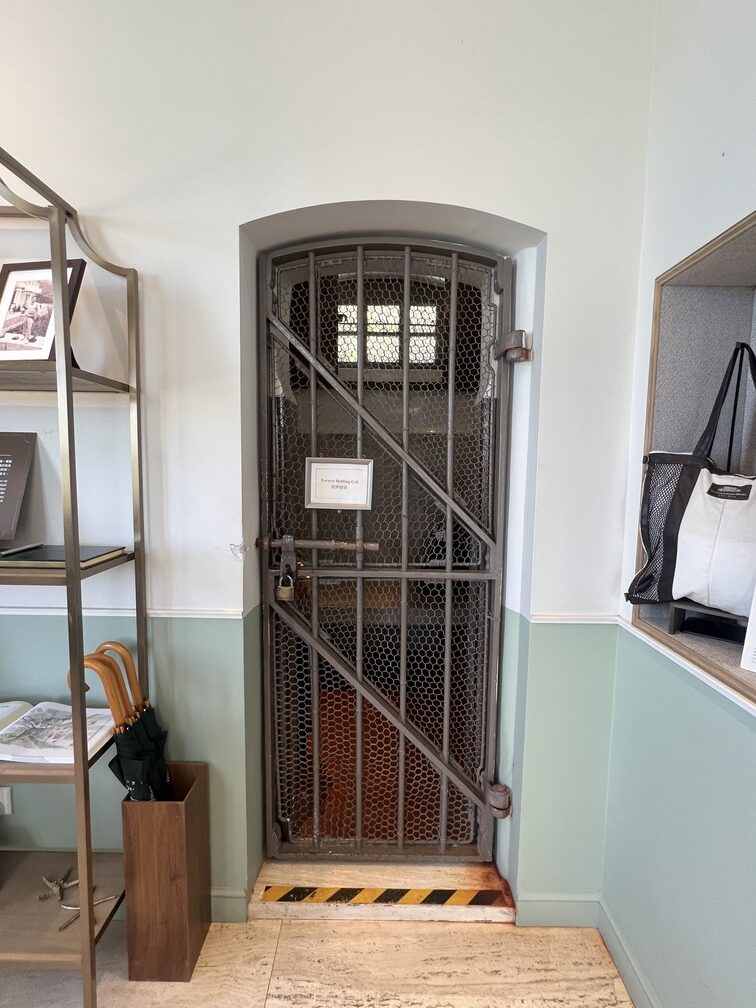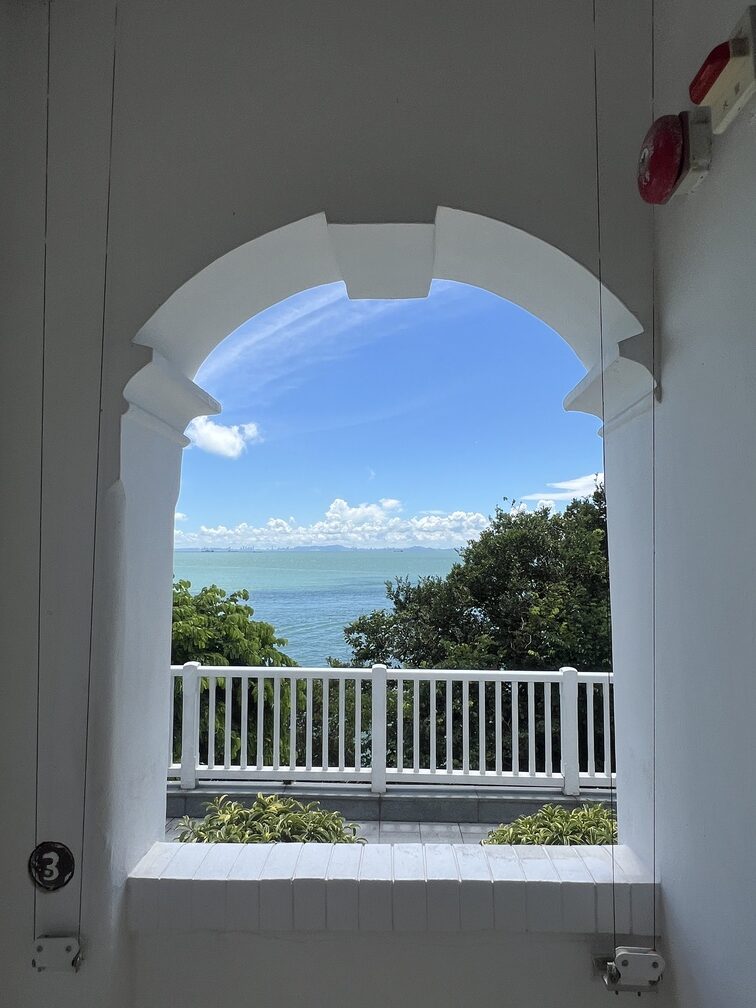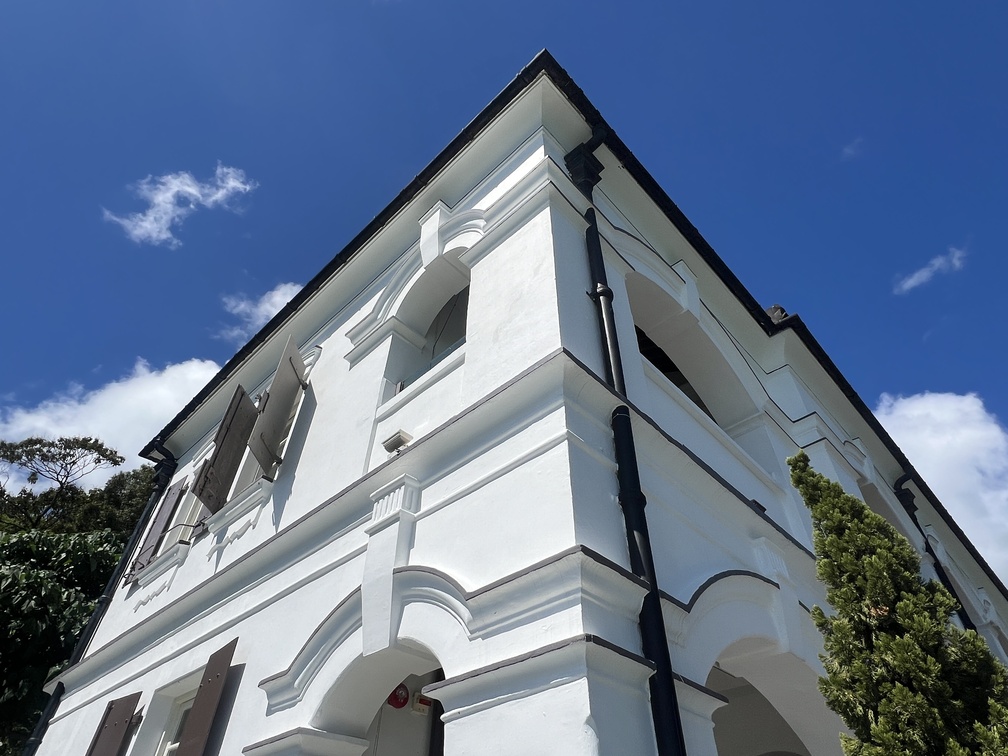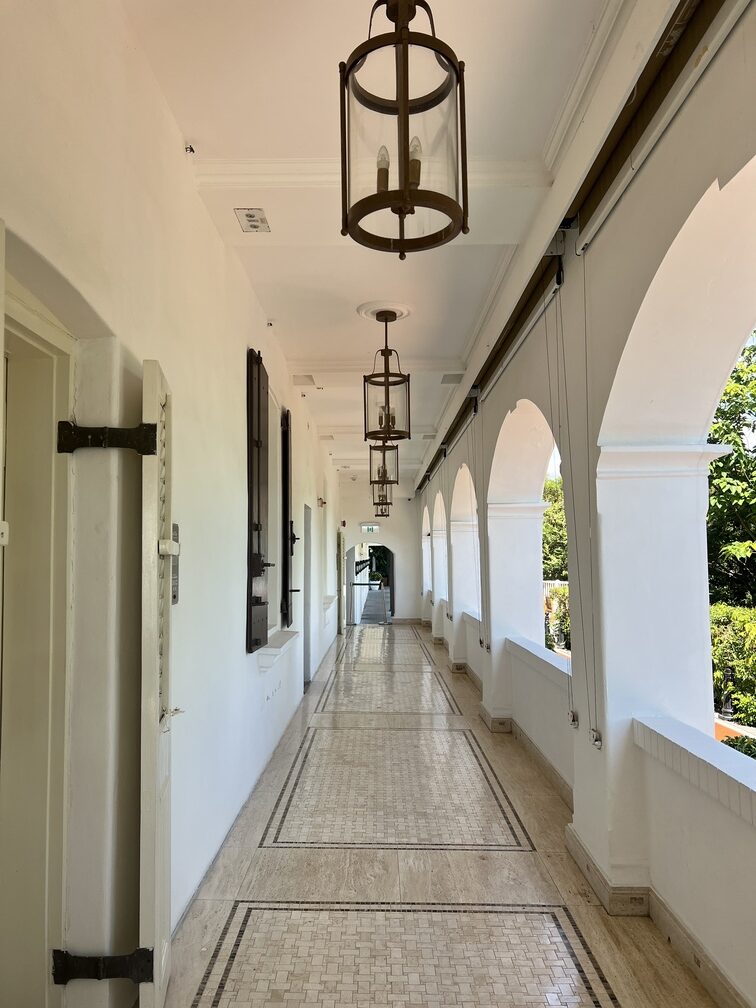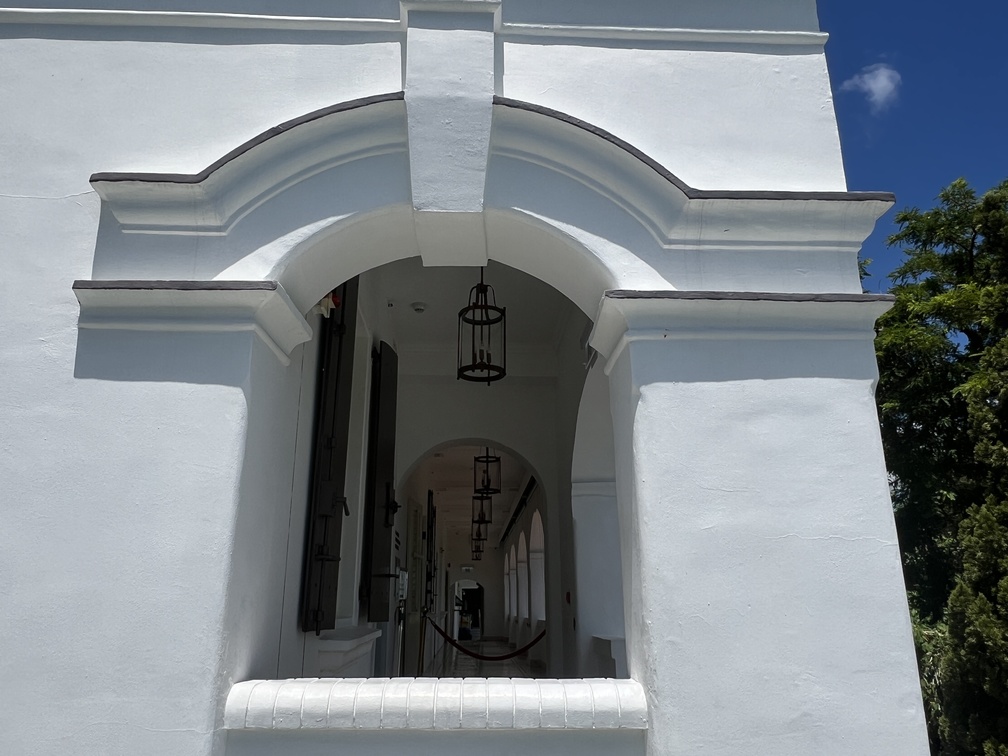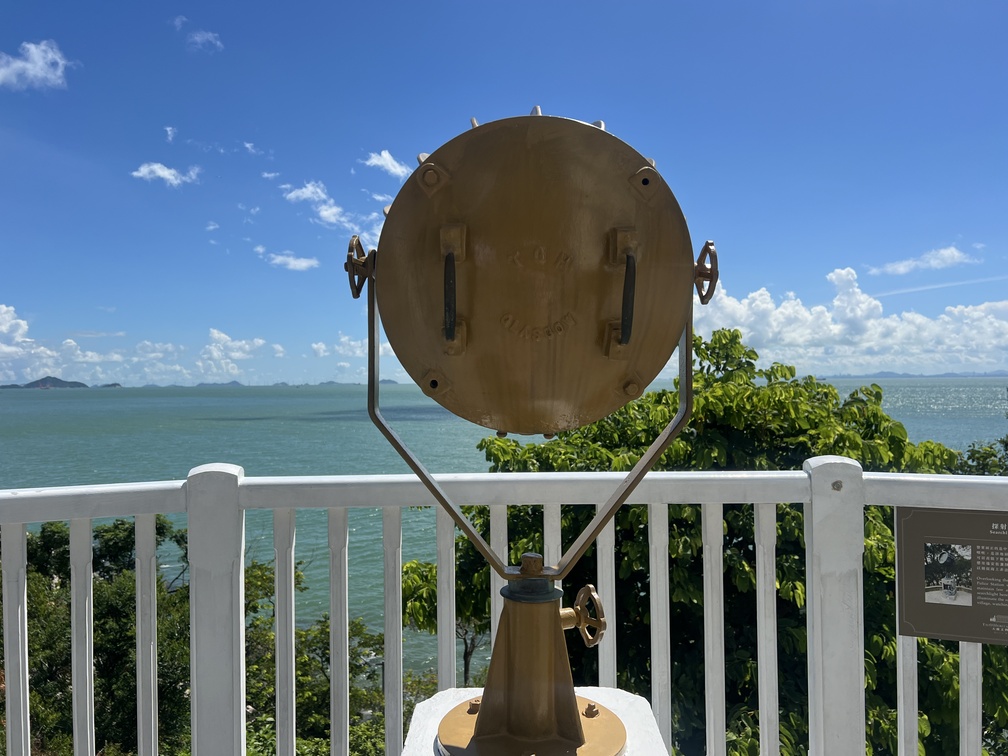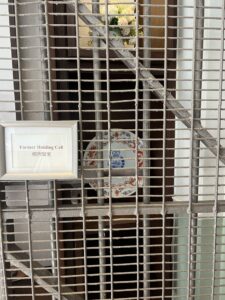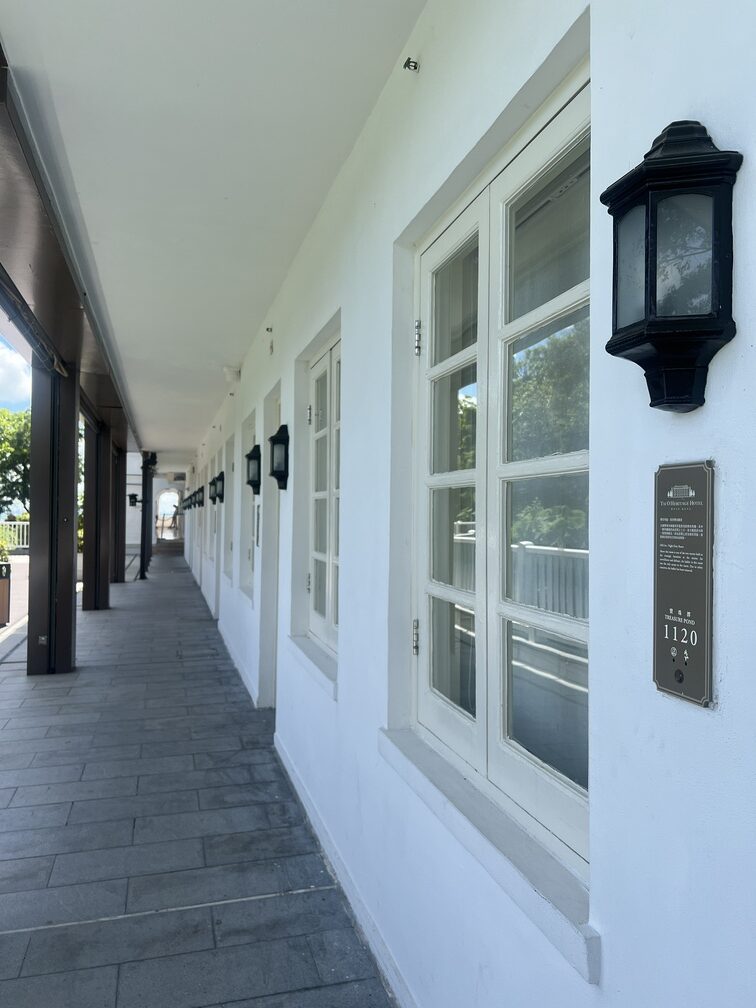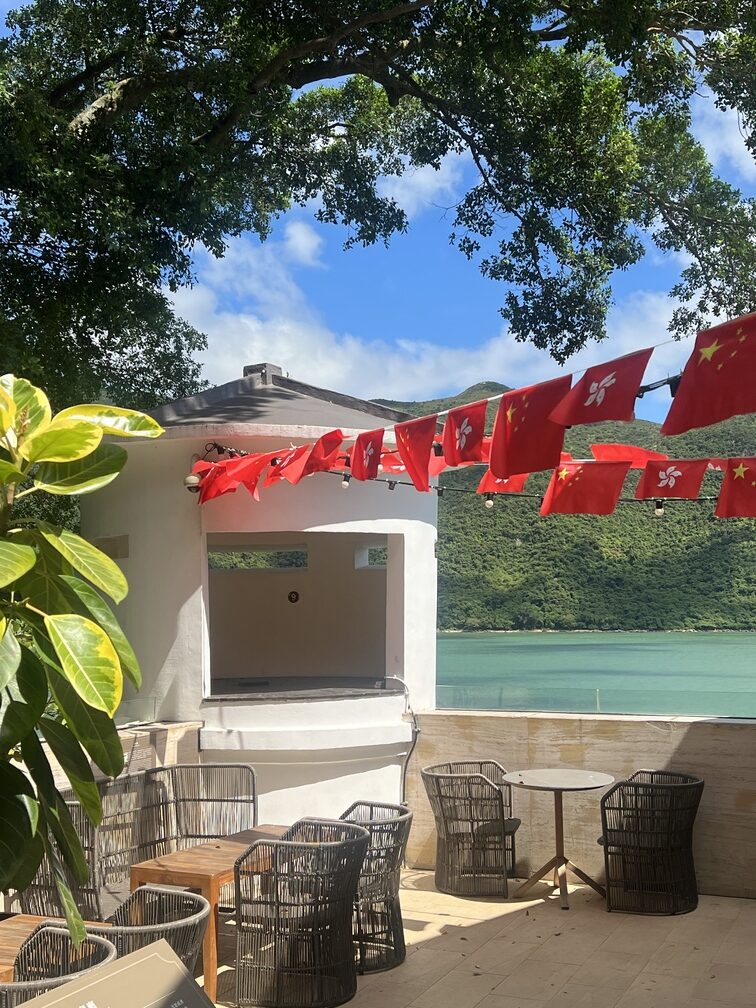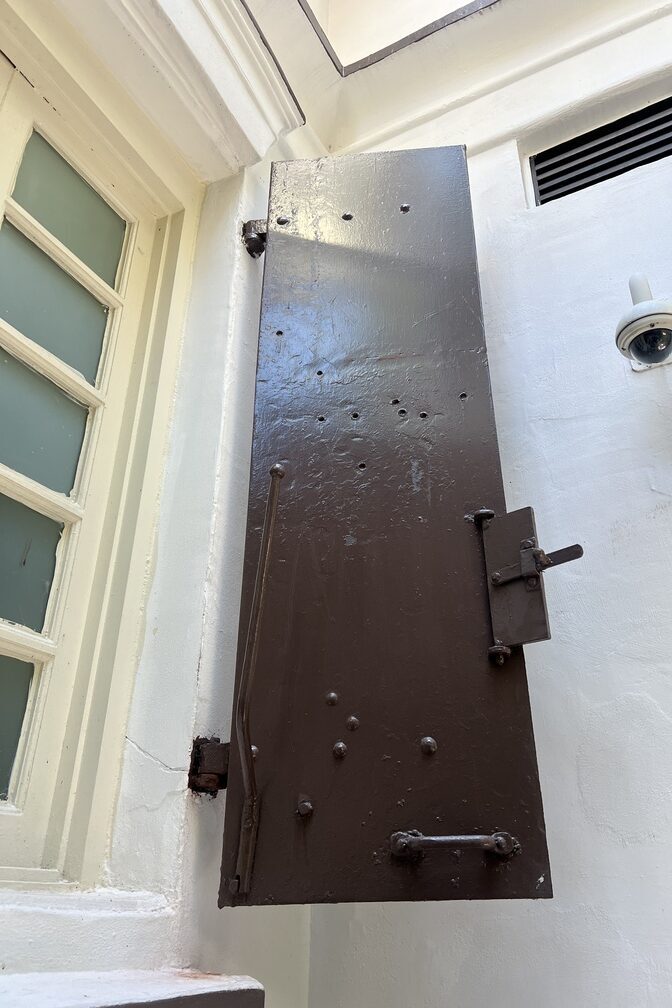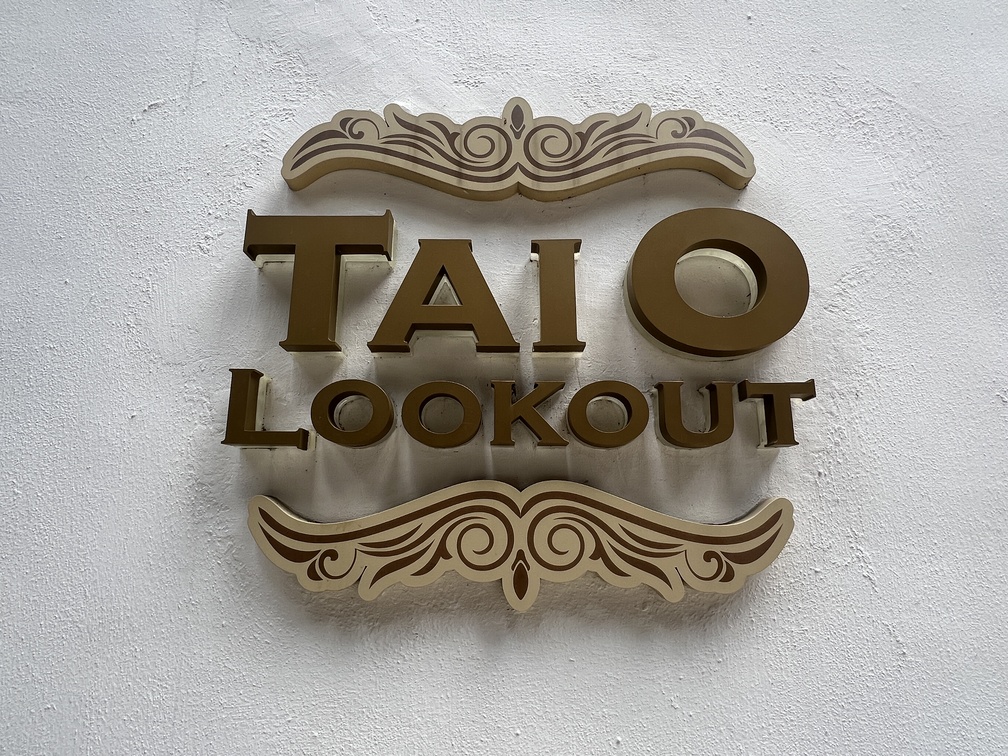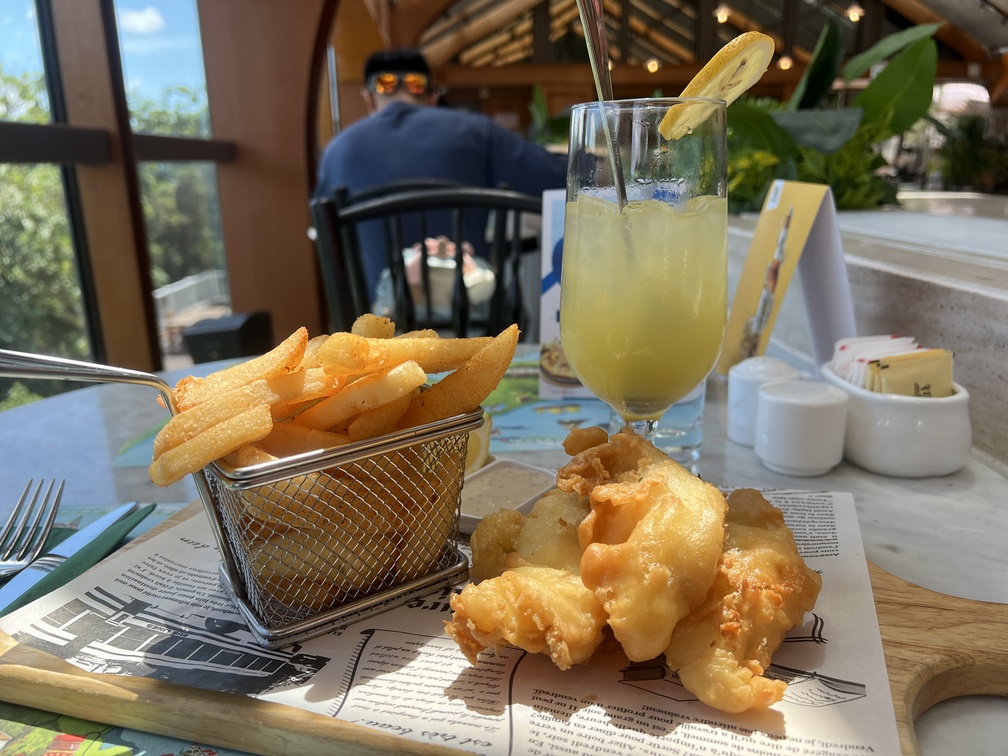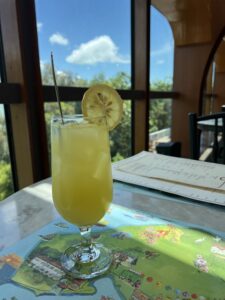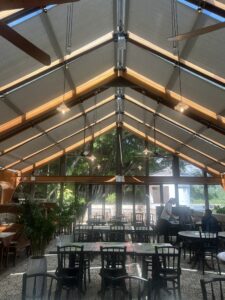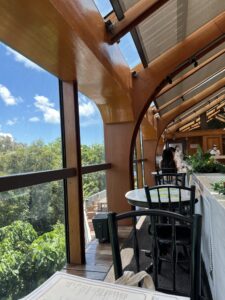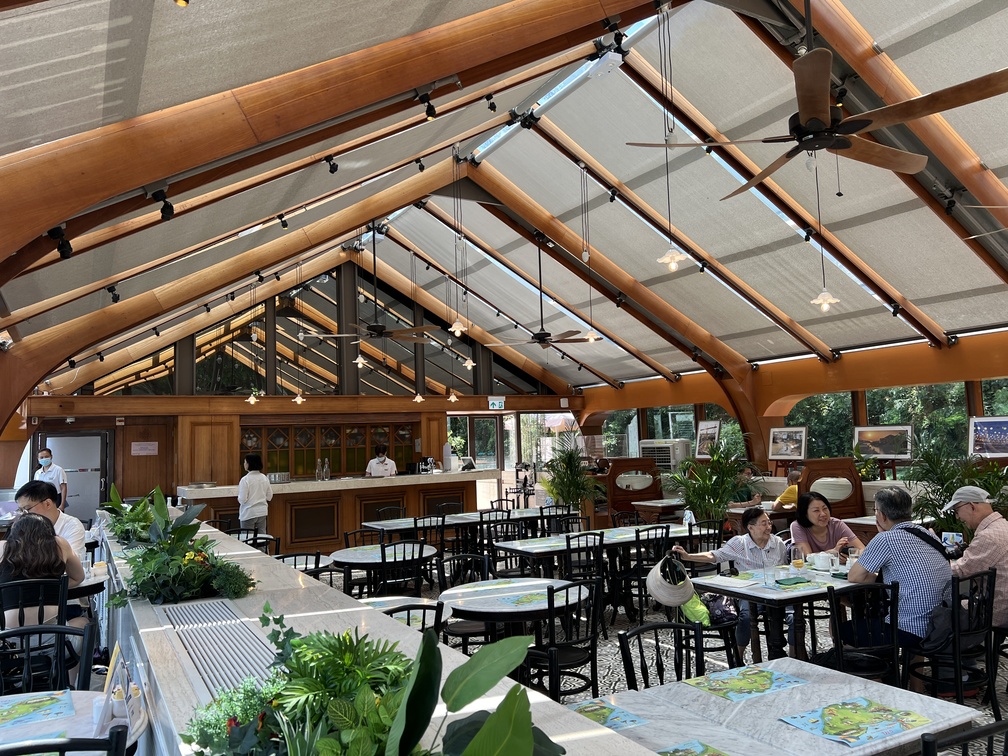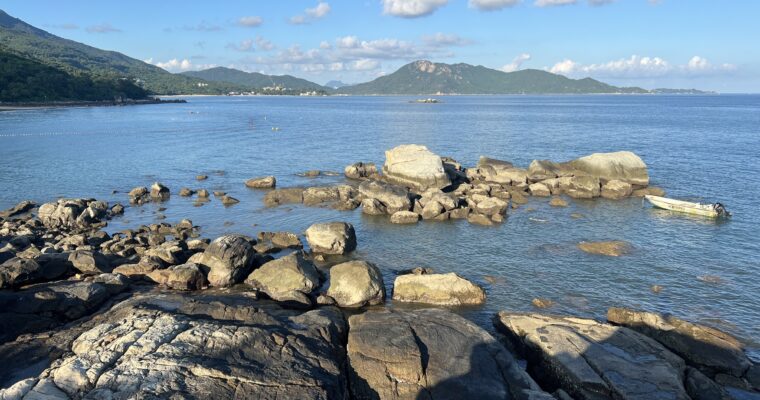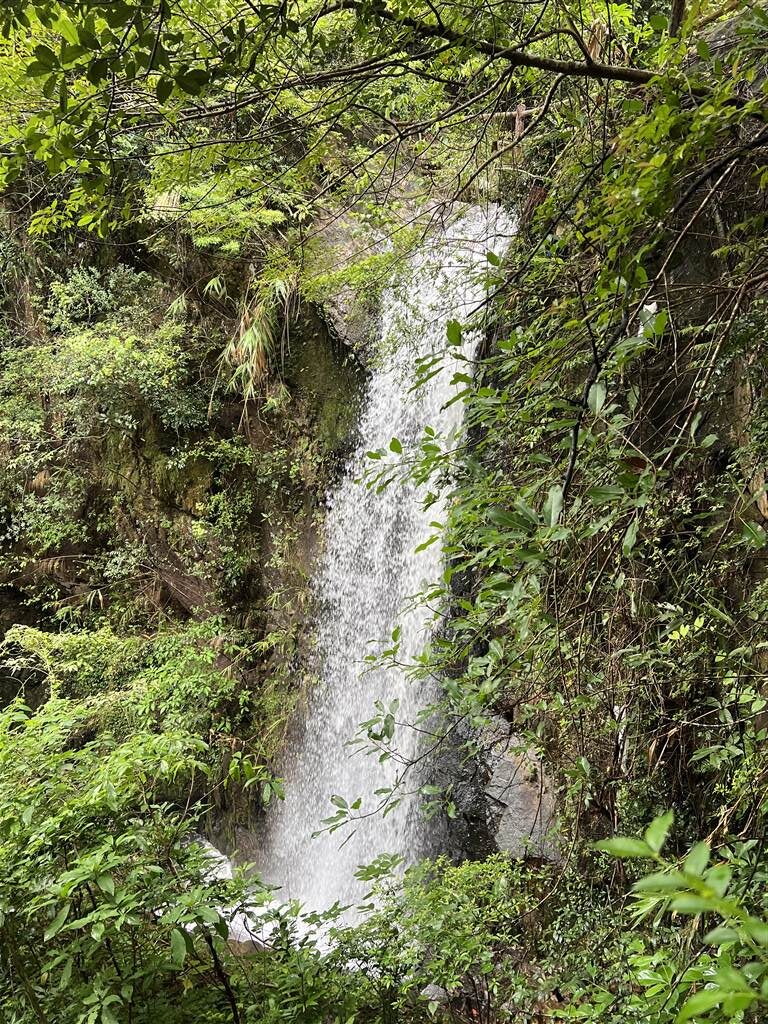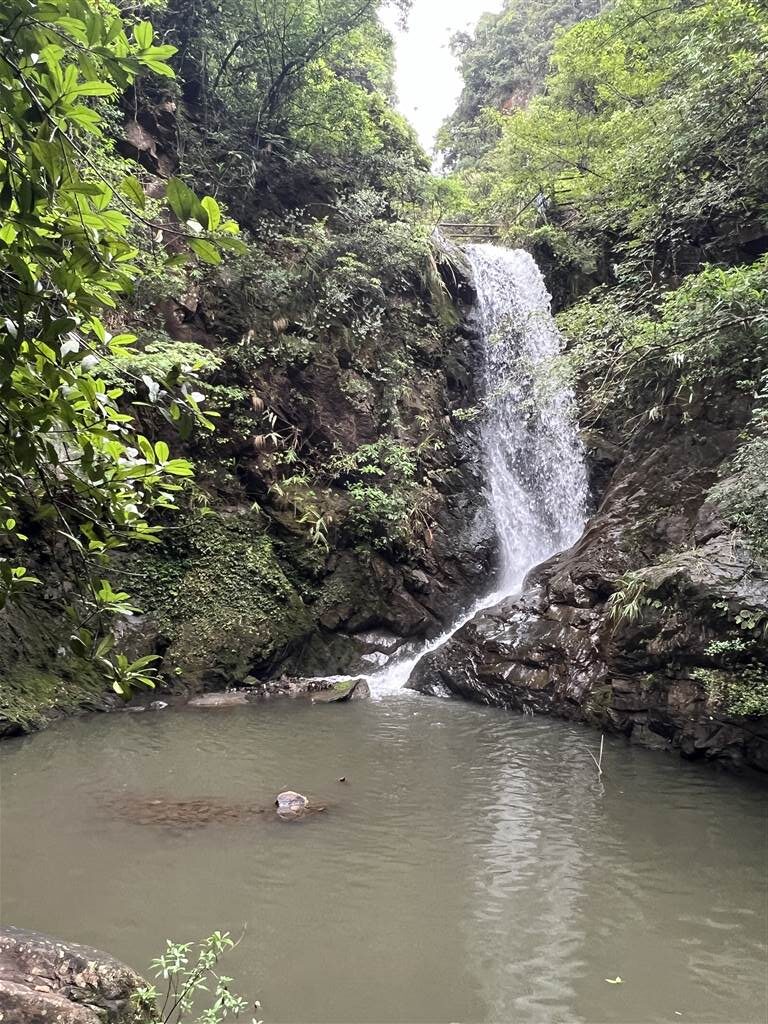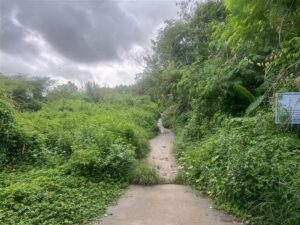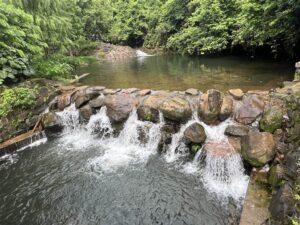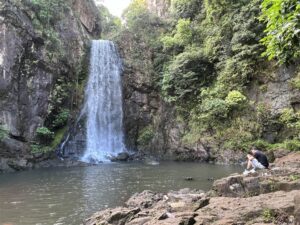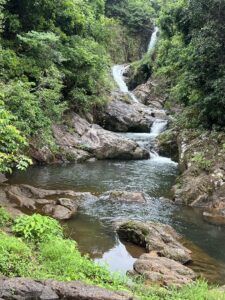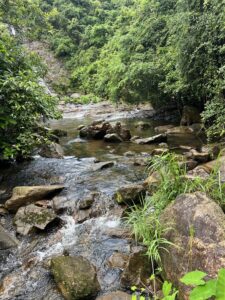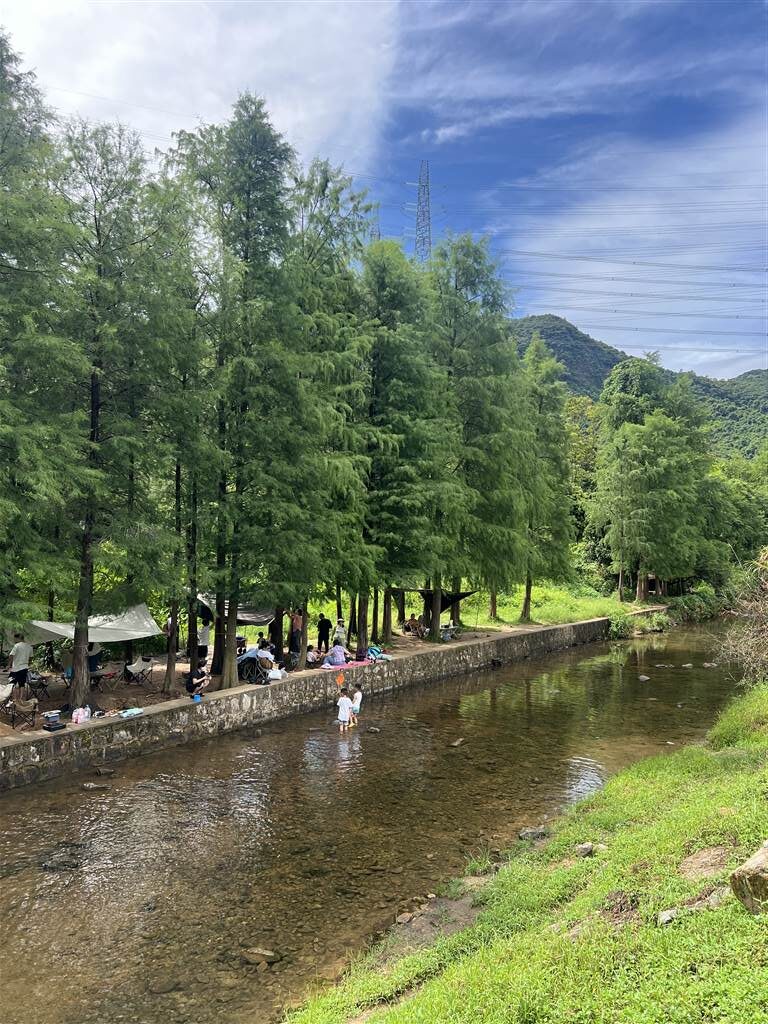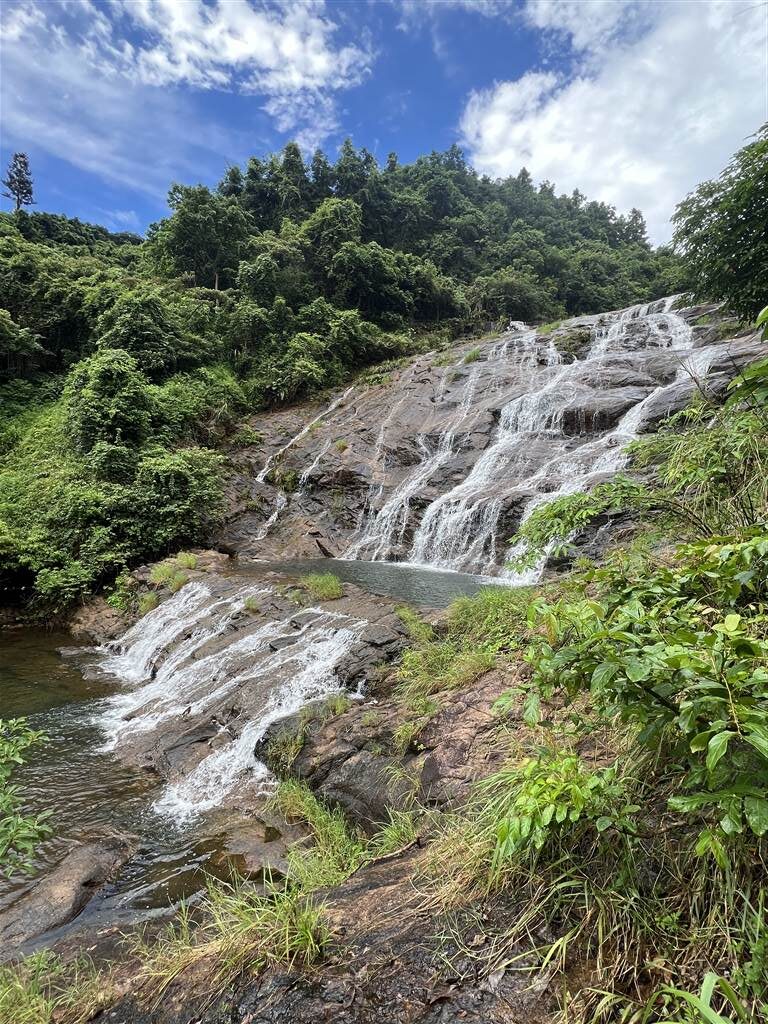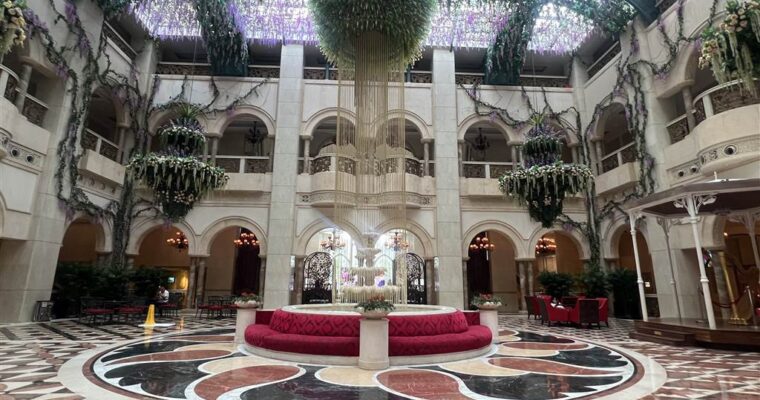From the Minor Mosque I took the metro to arrive at the State Museum of History in Tashkent. The museum itself offers some insight into Uzbekistan’s past. If I had a choice, I might have visited this museum in Tashkent before heading off to the ancient silk road, for the history here would have given me the much-needed context to fully appreciate all the other sites.
It is never too late to learn, however, and so I visited the State Museum of History of Uzbekistan on my last day in this trip.
The State Museum of History in Tashkent
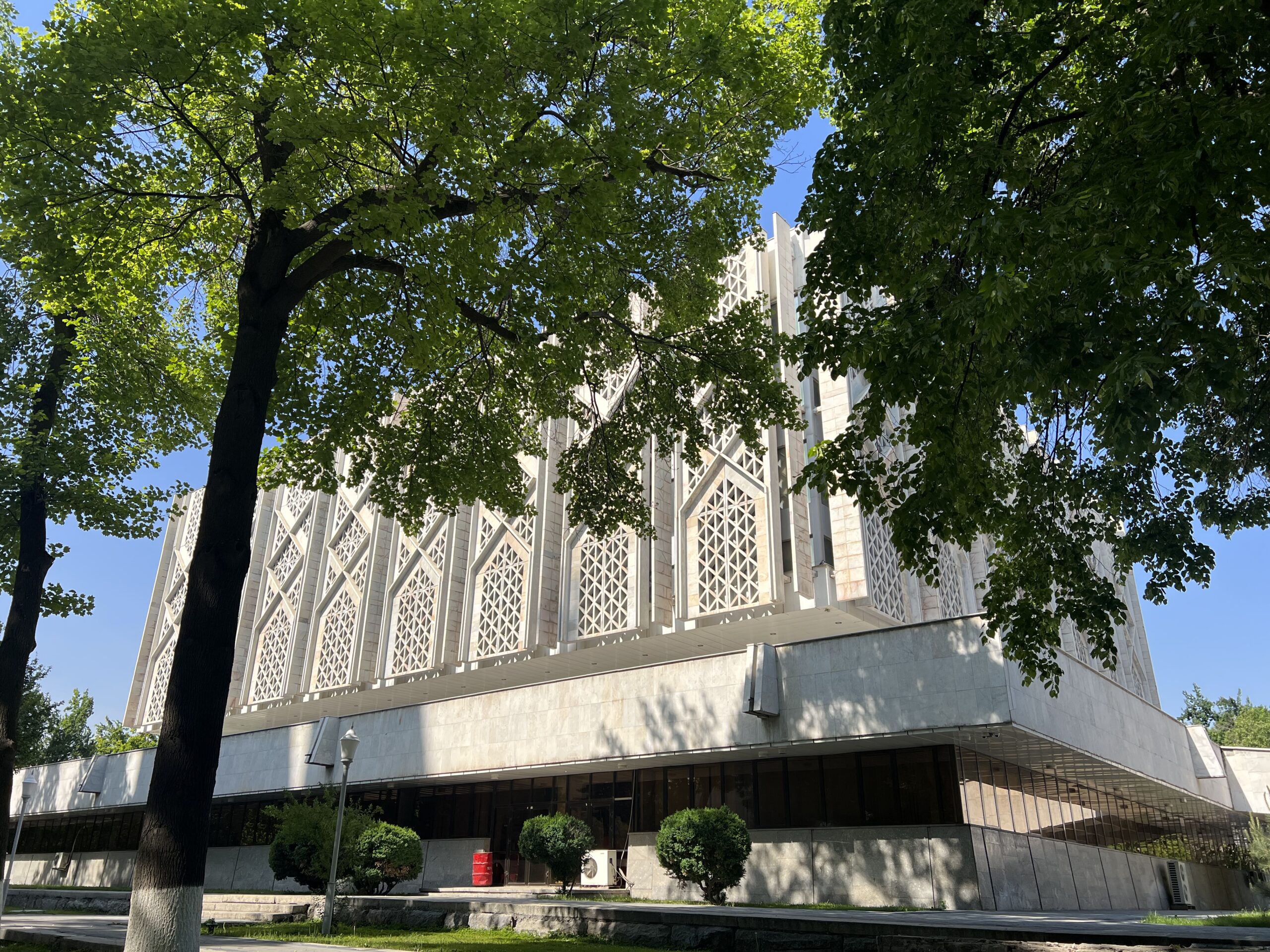
Formerly the National Museum of Turkestan, The State Museum of History of Uzbekistan in Tashkent was first founded in 1876. It was also known as the Lenin Museum during the Soviet times, as it was built to commemorate the centennial of Lenin’s birthday in 1970. The building showcases concrete grilles on the exterior walls with traditional Uzbek patterns called Panzhara. This architectural feature is considered a rare example of Soviet architecture incorporating explicit non-Soviet, multicultural elements.
“An important indicator of the significance of the museum was the fact that even ideological opponents of the use of historical architecture forms in modern buildings recognised the quality, the grace and the elegance of the building.” (Dezeen.com)
There are four floors in the museum and I only had time to walk through the main gallery that exhibits an enormous number of artefacts illustrating all of Uzbekistan’s history. The following are some highlights.
Exhibitions
An Overview of Uzbek History at the Main Hall
I would say this section of the museum would present the most comprehensive overview of Uzbekistan’s long history, from early neolithic settlement all the way to the formal establishment of its modern statehood (independence) in 1991.
Here is what the museum had to say as a welcome introduction to visitors:
Lying on the crossroad of great routes of the east, the Uzbekistan civilization was interacting with the advanced cultures of the east and the west. The first world religion – Zoroastrianism – was formed here, and other world religions – Buddhism and Christianity – have found a fertile field here. The highest level of Uzbekistan civilization has been manifested by the great contribution made by its representatives… in the strengthen of Islam as the world religion.
It is believed that the earliest human settlement in this part of the world dated back to 1.5 million years B.C., when the human beings developed the resemblance of the modern human. Artefacts of stone, ceramic and metal instruments were on display for this section of the exhibition.
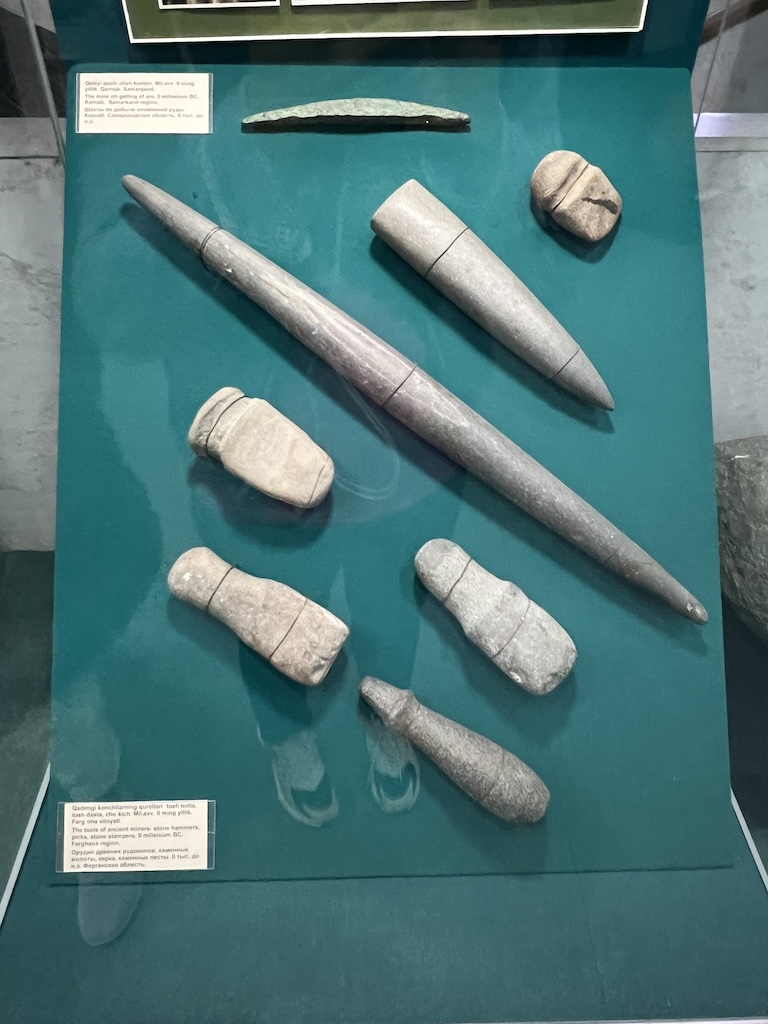
In and around 1 millennium B.C., the ideas of kingdoms appeared in what would be modern-day Uzbekistan, the notable ones being the Khorezm and Bactria. It is believed that the emergence of these types of arrangements were based on the needs to secure resources in the oases, build facilities such as irrigation, and to develop trade. This period of the kingdoms spanned a few centuries, and the development of trade and urban centers gave rise to the trans-continental ancient trade route known as the Great Silk Road.
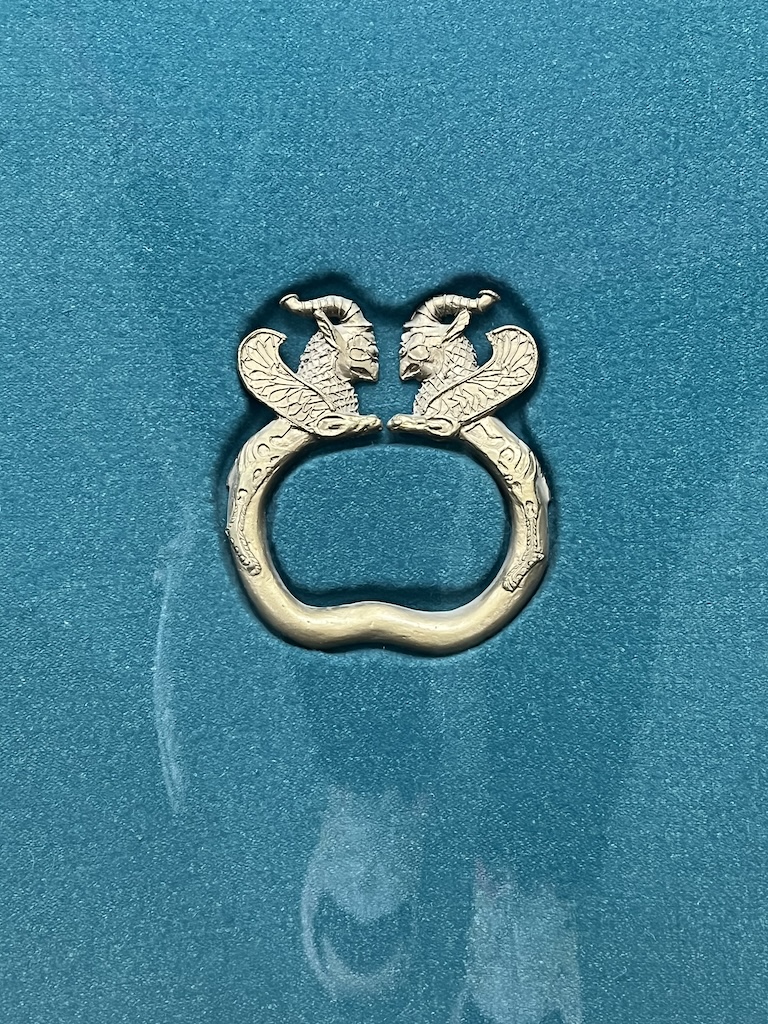
The era of the centralized and powerful kingdoms came to an end in the early medieval times. Before the Arab invasion, the area that made up what is now Uzbekistan was occupied by smaller state possessions. The prominent ones are recognizable in today’s terms: Samarkand, Bukhara, Chach (what is now Tashkent), Fergana, Khorezm and Chaganian. Around the 6th to the 8th centuries A.D., this area was known as the Turkic Khanate, a period of marked developments in large-scale construction of grand castles and mansions. Luxury and prestige found expressions in the artwork and architecture of the period.
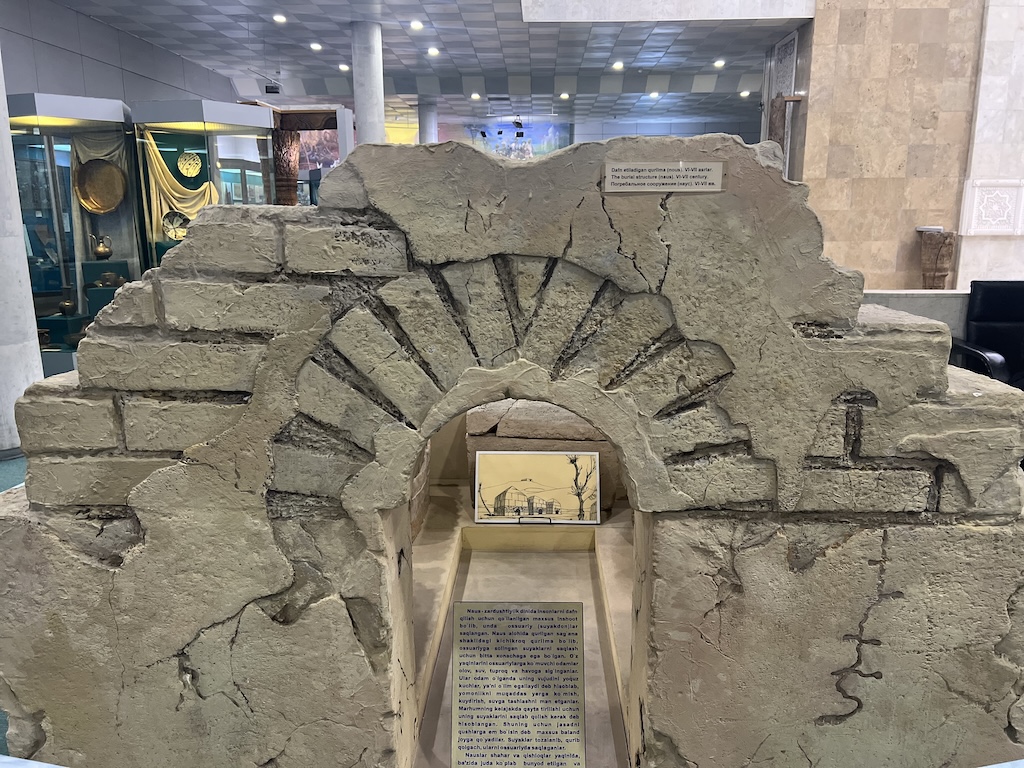
The 9th to 12th centuries were marked by significant progress made in matters of culture and scientific learning. The cities of Bukhara, Samarkand, Merv, Khiva and Urgench rose to the world stage as cultural centers. The Samanids, the burial of which was excavated in Bukhara, was one of the dynasties of glory in this period.
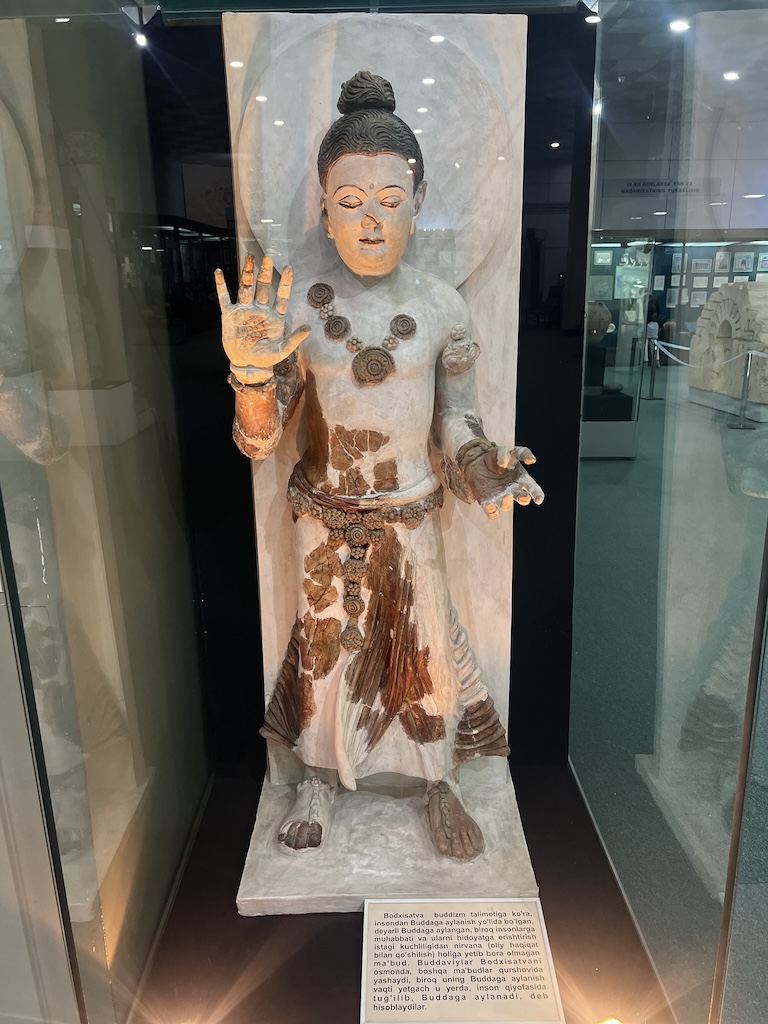
Tamerlane the great (1336-1405) (also Amir Timur) then rose next as the most revered warrior and statesman in all of Uzbekistan’s history. Beginning in the mid-14th century, he led campaign after campaign against the Mongol conquerors, and eventually built the Temurid Empire, which would last about a few generations after him. His conquests would take him as far as India.
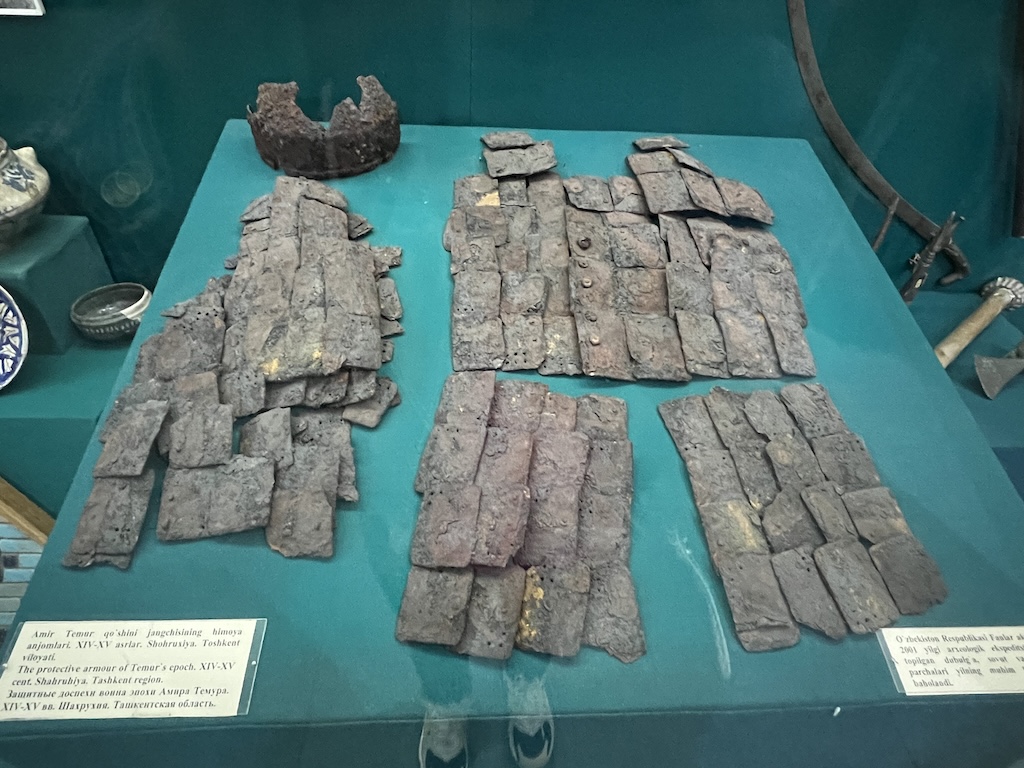
Photo: a Timurid armor.
In the next few centuries, three major khanates dominated Uzbekistan’s territory. Both Khiva and Bukhara became powerful, centralized khanates in the 16th century, followed by Kokand (early 18th century). Now we are finally closer to the modern times. With stability came the significant development of arts and culture, and it was during this time that the development of the Uzbek language flourished. The use of the Uzbek language broadened both in arts and literature, as well as state administration.
The days of stability and prosperity of these khanates would meet an eventual decline in the 19th century, due to the internal strife, external invasions, the rise of alternative marine trade routes diminishing the Great Silk Road, and weak central rule. In face of the ambitions of the Russian Empire, the Kokand Khanate disappeared altogether. Bukhara and Khiva were preyed upon next.
The first attempts of invasion by the Russians took place in 1717 and failed miserably. I have discussed this history in the Khiva entry. It was only until the mid 19th century that the Russians succeeded first in taking down the Kokand Khanate, then capturing Tashkent. Between 1866 and 1868, Bukhara and Khiva would fall into Russian hands. According to the descriptions at the museum, “(the khanates) appeared to be in the grip of colonial yoke.”
In face of colonial oppression, the people of Uzbekistan revolted. There was a unified attempt in all strata of the Uzbek society to rise up against the Russian Empire. Large rebellions took place in 1892 “Cholera” Revolt, 1898 Andijan Revolt, and the 1916 Revolt. These rebellions engulfed all of Turkestan.
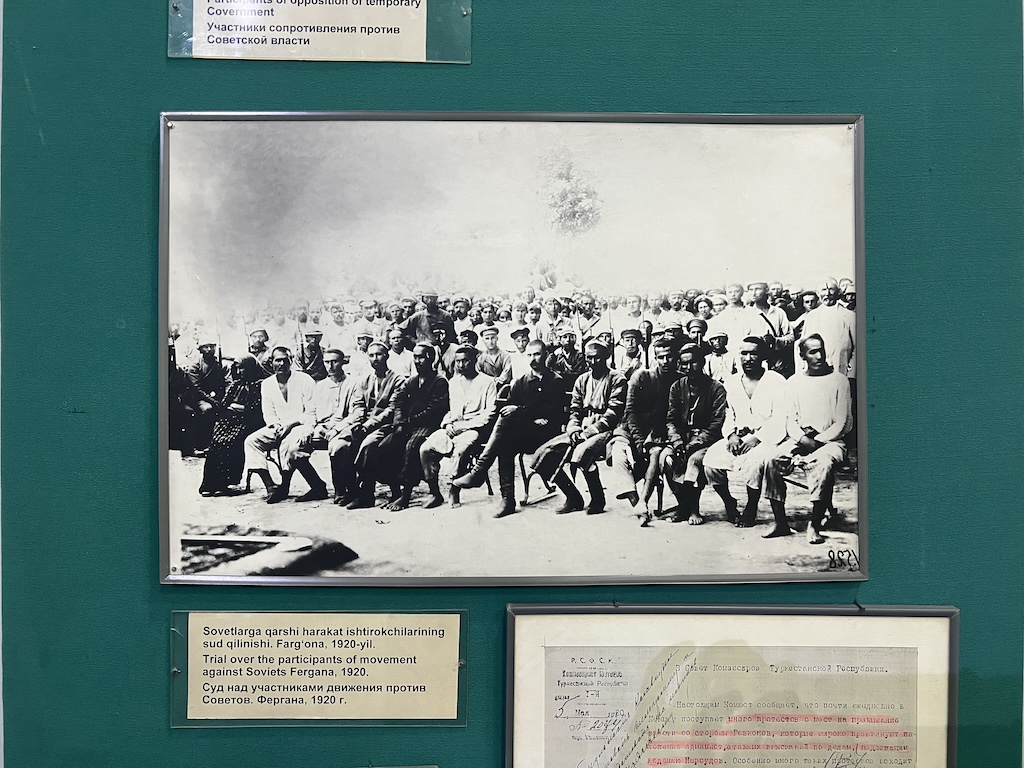
Photo: A trial of the ressistance against the USSR.
With the success of the Bolshevik Revolution came continued subjugation by the Russians, then in the name of the Soviet Union. Uzbekistan was an agricultural-based nation. As part of the Soviet Union, the country’s natural resources were brutally exploited. The near-disappearance of the Aral Sea was but only one example of such exploitation. From 1919 to 1989, Uzbekistan underwent 70 years of communist rule in what was characterized as “a continued condition of colonialism.” The progress that was made in this time, in the sense that the country did progress in its agriculture by becoming agro-industrialist, was perceived as “progress made by the Uzbek people despite communist rule.”
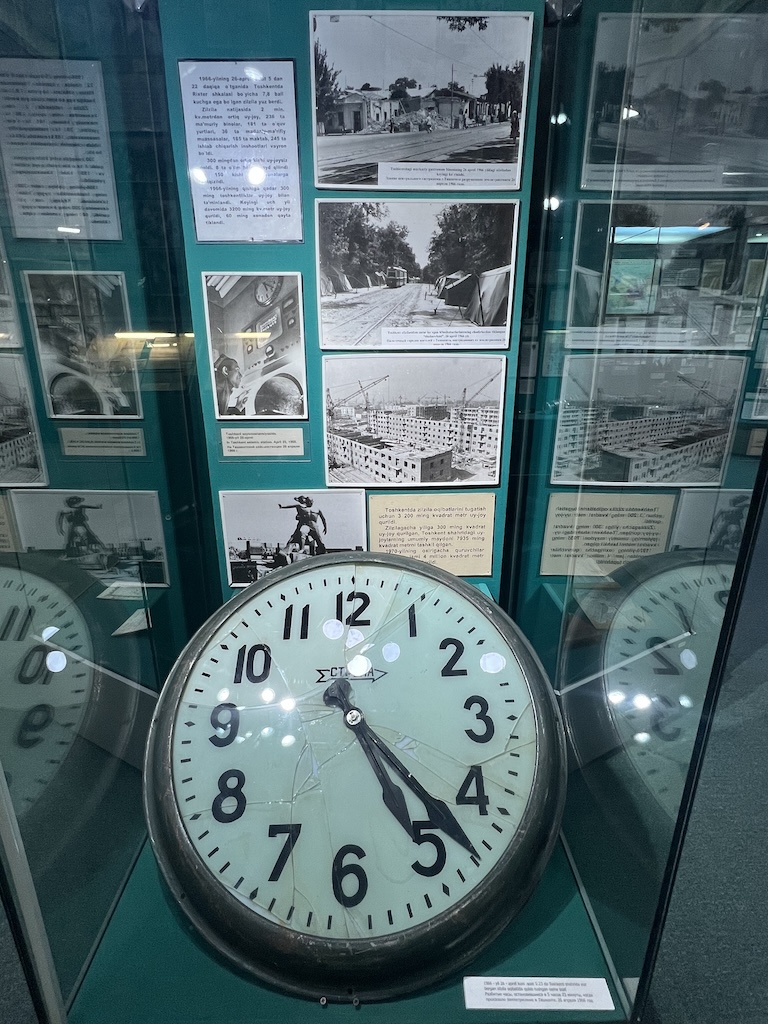
Photo: This clock stopped at the moment the earthquake hit.
A defining modern event in the history of Uzbekistan is the Earthquake of 1966 in Tashkent. The museum featured a clock that was broken by the earthquake at the very moment that the earthquake struck. The 5.2 magnitude earthquake devastated Tashkent, destroying much of the city’s existing infrastructures. 300,000 of its residents were rendered homeless. The beautiful metro stations in Tashkent were part of the effort to restore the city from the earthquake. In the next three years, reconstruction of the whole city managed to restore life back to normalcy for the people.
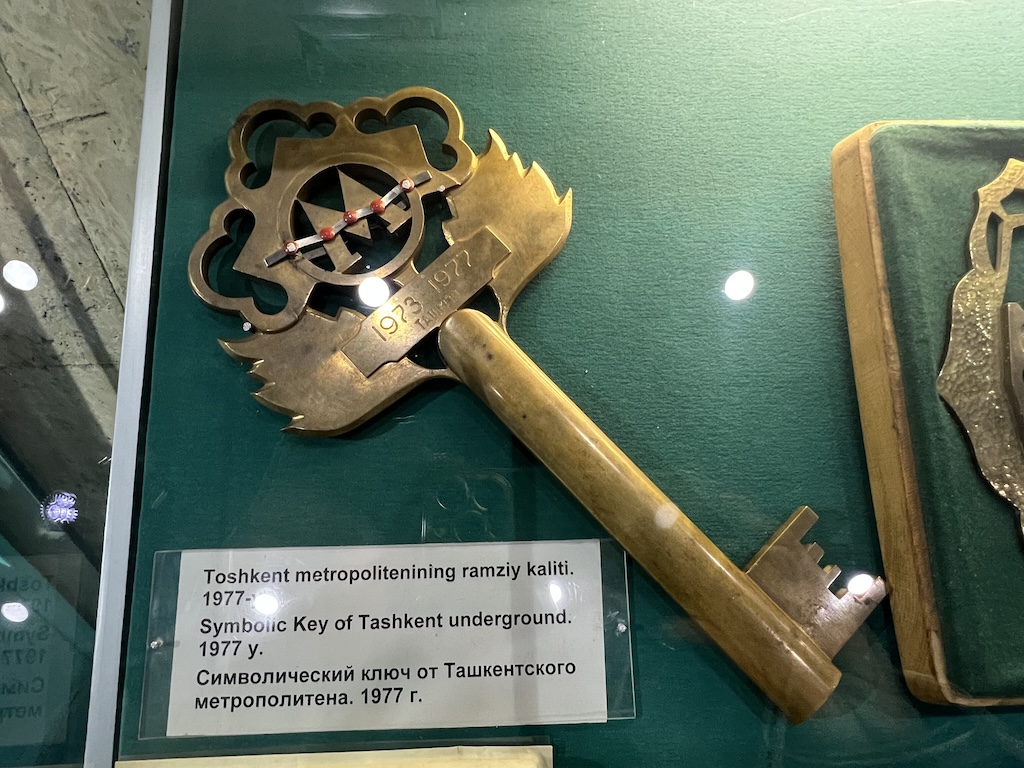
Photo: The key of the Tashkent Metro, rebuilt after the earthquake.
Fast forward to September 1, 1991, Uzbekistan finally declared independence as a republic after the final demise of the Soviet Union. It has since maintained a close relationship with its Central Asian neighbors, and was very much within Russia’s zone of influence as well. The former President Islam Karimov was the Secretary of the Communist Party of Uzbekistan at the time of independence. He declared Uzbekistan an independent state following the attempted coup in Moscow in 1991. Uzbekistan was the second in the Central Asian nations to declare independence, after Kyrgyzstan.
President Islam Karimov remained in power until his death on September 2, 2016. He was the authoritarian ruler of Uzbekistan for a full 25 years, despite explicit constitutional provisions that limited presidential terms to two only. His third term of presidency was extended by the means of a referendum.
Islam Karimov’s Uzbekistan was a repressive regime, where dissidents were assassinated. He also promoted laws and policies that were anti-civil society and anti-Islam. In terms of foreign policy, he maintained isolationist tendencies.
Contemporary Uzbek Art
The Uzbek artist featured in this exhibition, O’ktam Saidov, was born in 1980. His artwork opened my eyes to the aspirations and hopes of this generation of Uzbeks, who have just come of age. I really enjoyed this part of the exhibition.
Sources
Descriptions on site at the State Museum of History of Uzbekistan in Tashkent.
Architectuul.com, Uzbekistan State Museum of History.
Dezeen.com, Ten key examples of Tashkent’s Soviet modernist architecture,
Uzbek-travel.com, The State Museum of History of Uzbekistan.
The Wikipedia on Islam Karimov at https://en.wikipedia.org/wiki/Islam_Karimov

